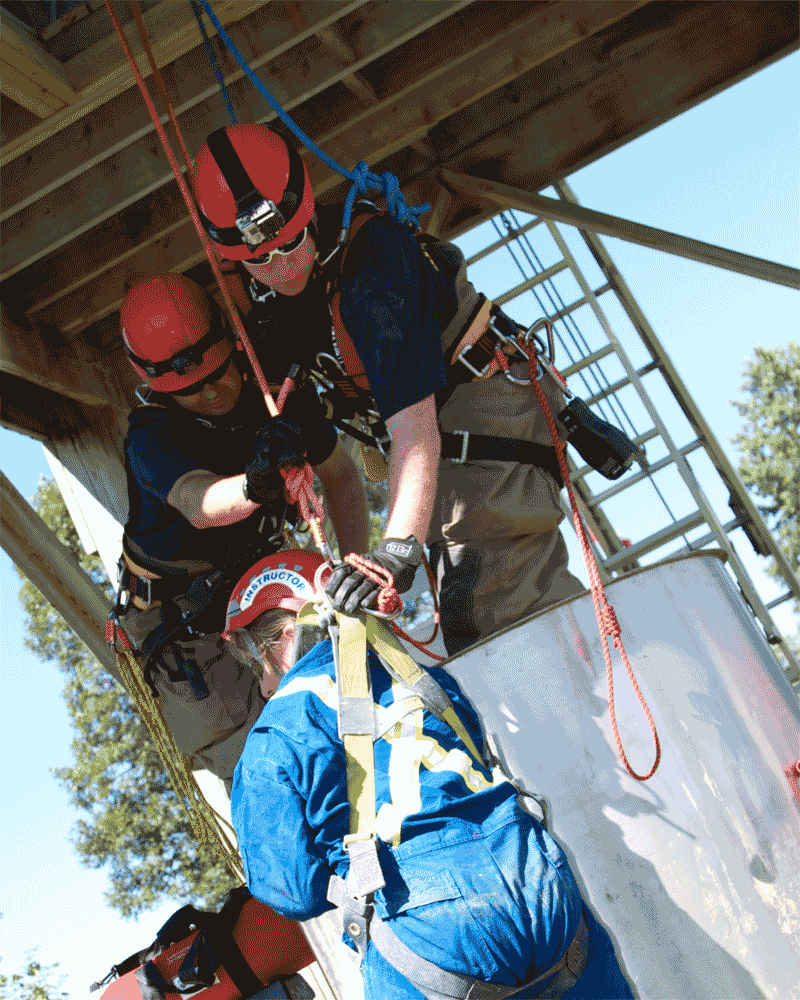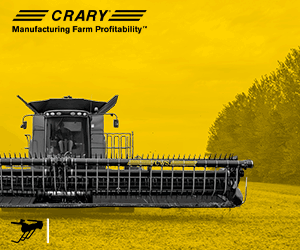Safe harvest
THE DANGERS OF FLOWING GRAIN AND GRAIN BINS
in the autumn of 2011, hog farmer and cash cropper Todd Brady and his
14-year-old son were unloading 600-bushel gravity wagons in Merlin, Ontario. While he went to check the bin, Brady told his son to stand and watch the soybeans unload. He was told that under no circumstances was he to enter the wagon. What happened next left a son embarrassed and a father panicked.
“I thought he was fine,” says Brady. “I went up on the side of the bin because it was getting close to being full. Suddenly, I heard a squealing noise. I scurried down the ladder on the side of the bin and up into the wagon. I couldn’t see my son around anywhere. When I got there, he was up to his chest. I tried pulling on him, but I couldn’t get him out.”
Despite the fact that Merlin is a predominantly agricultural region, the local fire department does not have the equipment needed for a grain entrapment rescue. Luckily, Brady remembered learning about grain extrication tools and how they work, and rigged up his own device.
“I looked around and found that I had three pieces of three-quarter inch plywood,” he says. “I put two against the wall of the wagon, and then another behind that, so when I started bailing the grain out from around him the pressure of the grain pushed all of that plywood together so that I was able to bail him out.”
Using an old ice cream pail, it took an hour and a half to dig Brady’s son out of the wagon. “I don’t know where I learned how to do this, whether it was in one of the farm magazines or in a farm safety video,” he says. “But after the fact, you didn’t hear my son talking, he was so charged up with adrenaline.”
Brady’s son was lucky where others have not been. “He listens to me now though,” he laughs.
flowing grain hazards — a refresher
The storage and handling of large volumes of grain is becoming common on Ontario farms. But as most producers know, it can be dangerous business. Workers can easily be trapped or caught in swiftly flowing grain. Grain bridges can collapse, and so too can vertical grain walls.
PHOTO: A GRAIN BIN RESCUE DEMONSTRATION IS PERFORMED BY HOWICK TOWNSHIP FIRE DEPARTMENT.

Flowing grain, says Health & Safety Ontario, acts very similar to quick sand. In fact, the rate of inflow at the centre top of a grain bin is so great that escape is virtually impossible. Once trapped, the victim is drawn to the floor. Survivors are few, but those who survived said they did so because they quickly covered their mouths and noses and did not panic.
Inside grain bins, hidden hazards can be the most dangerous. A grain bridge collapse, for instance, can bury and trap workers in a matter of seconds. Created when the top layer of grain becomes spoiled and crusted, a grain bridge can conceal hidden voids, which can collapse under pressure. To avoid this type of accident, never stand on the surface of the grain.
Spoiled grain can become crusted, creating large vertical columns inside the bin, as well. As the grain is removed from the wall, there is always the potential for an avalanche. If entry is required in this situation, the worker should be lowered from the top to carefully dislodge the grain off the walls from the top down.
Entrapments in high-capacity grain vehicles happen all the time, too. Victims, though, are usually youth under the age of 16 who are either buried during loading or drawn into the flowing grain during unloading. To prevent this type of accident, grain producers should teach family and employees about the hazards of flowing grain. Most importantly, never leave very young children unattended while grain is being loaded and unloaded.
emergency response
Unfortunately, not all of Ontario’s rural fire departments are equipped to handle a grain bin rescue, which is exactly why DuPont Pioneer launched FIRE, the Funding Initiative for Rural Emergencies. DuPont Pioneer has committed $100,000 to further ensure the safety of Canada’s rural communities. The program was launched in Howick, Ontario, where the local fire department held a live grain bin rescue demonstration, using equipment and training provided through an $8,500 donation.
“The Pioneer donation will dramatically improve our ability to respond to agriculture-related emergencies and we are pleased they are making a commitment to help other rural departments like ours,” says Howick Fire Department Chief Shawn Edwards.
Individuals are encouraged to contact their local Pioneer sales representative to learn more about funding opportunities. After the accident with his son, Todd Brady says he’ll be doing just that.
To learn more about avoiding flowing grain entrapment or what to do if someone does become trapped, visit www.healthandsafetyontario.ca.
GRAIN SAFETY TOP TIPS
Grain Farmers of Ontario District 7 (Oxford and Waterloo) held a Grain Safety Day this summer to promote awareness about the dangers of on-farm storage and to promote best handling practices. Here are a few words of caution from the experts:
Fred Spiro, Ontario Agri Business Association
“If you operate under the federal legislation of the Canada Labour Code, and you work at a height of seven feet or higher with the potential for falling, you must have fall arrest equipment. If you operate under the Health and Safety Act of Ontario, if you work at 10 feet or higher with the potential of falling, you must have fall arrest to protect you.”
Wayne Bauer, Star of the West Milling Co.
“We promote seven best management practices: develop a zero entry mentality so people are not tempted to go into the bin; never work alone; never enter the bin untrained; use a checklist to make sure you don’t take short cuts; have a shut down/lockout procedure; properly secure a harness lifeline; have an emergency preparedness plan.”
Steve Lembke, farmer, Five Star Seeds
“We as farmers all work a lot of times by ourselves or do things by ourselves. But if you are in a situation that could be dangerous, where there’s the potential for anything to happen, go and ask a neighbour or a family member to help you. We’ve learned now that we don’t do things alone.”
You can watch these presentations and a simulated grain bin rescue from Grain Safety Day at:?www.gfo.ca/safety. •








